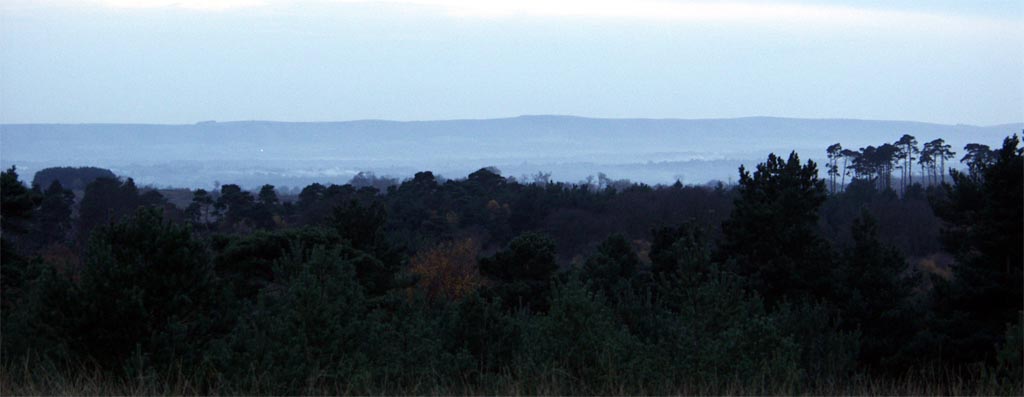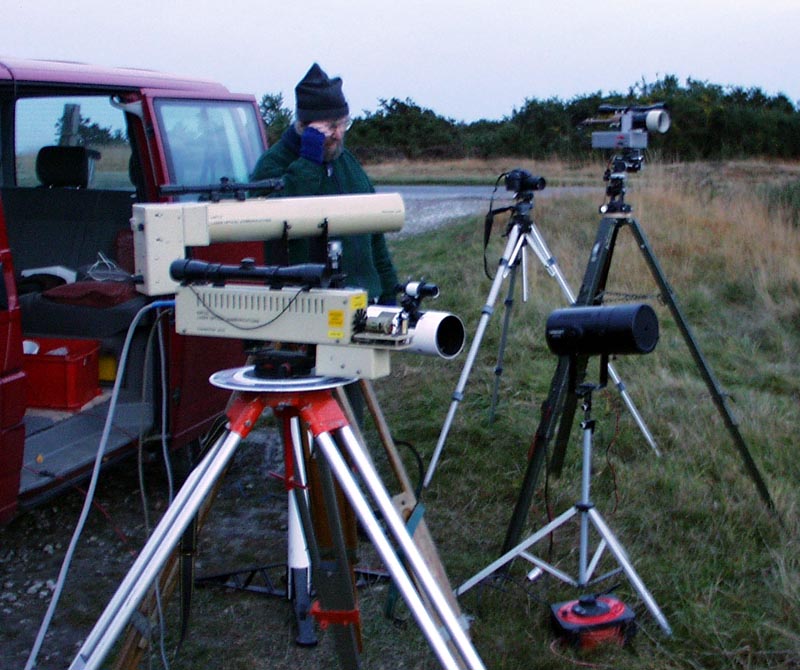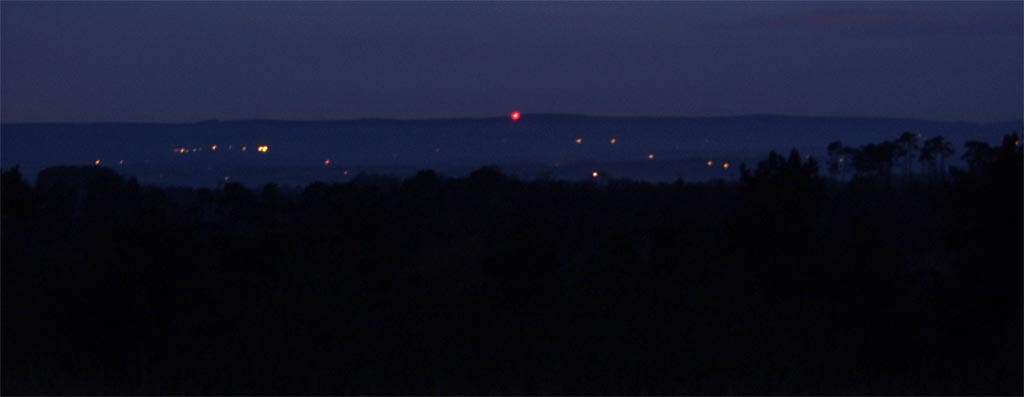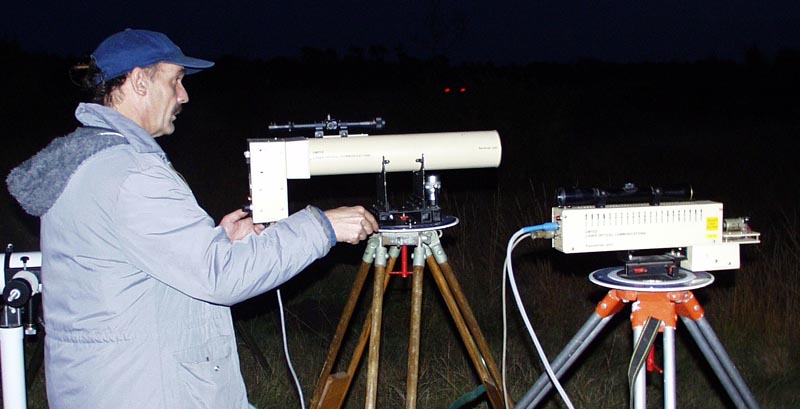Experiments with Laser Communications
G8LSD
Ditchling Beacon and the downs as seen from 22 km at Ashdown Forest
Above can be seen the South Downs at just after 16:00 on Saturday 15th November 2003. The wind of the previous day had dropped and the air was still and clear. Following the taking of this picture, just as night was falling, mist was seen to be developing in the weald between Ditchling and Ashdown Forest.
At the car park just to the east of the trig point at Ditchling Beacon was G7JTT/P. At Ashdown Forest G0FDZ/P and G8LSD/P were located. The southern end of the Four Counties car park provided an excellent site. As can be seen in the picture the path is unobstructed even by grass and bracken at the 1m level.
Whilst John (G7JTT) was waiting for a suitable parking space to be vacant, we tried the first tests. The locating of a distant laser station is difficult as the location must be pinpointed very accurately if the extremly narrow laser signals are to be captured by the equally narrow aperture of the receive optics. All equipment is fitted with rifle sights to aid alignment, but at dusk the landmarks tend to be hard to identify even after initial alignment with a compass.
G8LSD with the Equipment
Allan (G8LSD) took a variable power studio flash monobloc of up to 400 Joules pulse power as well as the 2 Joule Maplin kit stroboscope. In the picture above the Bowens monobloc is the black cylinder. Chris (G0FDZ) had a professional variable rate stroboscope with him. The theory behind the test is that the detectors will respond to the the high power short duration pulse with a click, where if a continuous light source of the same power was available the detectors would not respond to the DC. Additionally 400 J discharged in 2 mS is equivalent to a steady source of 200 kW. On low power the studio flash was immediately visible to the naked eye in daylight. When high power was used John was amazed at the brightness. Clearly this power was in excess of what the detectors would need. In daylight the other strobe devices were invisible.
Later in the evening we returned to the strobe devices and the detectors on all three pieces of equipment could pick up the clicks from a small strobe. None of us could see the distant flash by eye. This clearly is a good tool to exploit further. John was using a Maplin 1 J strobe housed within a car spotlight reflector. Allan had his Maplin strobe in the reflector of a compact fluorescent spotlight. (Ex RS components). A final point in white light pulse detection was that Chris's photomultiplier was more sensitive to these pulses than the OPT211 Allan was using. With laser radiation the position was reversed. This clearly illustrates the greater sensitivity of the photomultiplier to the blue end of the spectrum.
The laser of G7JTT at Ditchling
The Ashdown stations were set-up before the Ditchling end. The beauty of this test path is that the initial location of Ditchling is facilitated by the car headlights as they turn to descend in front of the car park. With both receivers roughly aligned to the correct spot on the horizon, John switched on his laser. It was visible as a dim light from the start, and more importantly the receivers picked-up the tone as soon as the laser was switched on. John has constructed a beam expanded that enables his laser to initially be set to a wide dispersion. Over time John was able to re-locate the lenses to achieve a very bright light aimed at us. At this point the receivers were overloaded.
Allan was quickly able to align his laser onto John. We believe that the increased speed of location was in part due to the new receiver that John had constructed. This is built from a surplus silvered disk of about 300 mm diameter. To fine align all three laser systems, the received signals were relayed back over 2 M FM. This audio feedback makes the critical adjustments much easier to achieve. John was using test equipment to measure the signals. The G8LSD signal was estimated at some 40 dB above the noise. The Pulse Width Modulation speech signal was at 20 dB above the noise on peaks. Chris G0FDZ was using a HeNe laser and although optically brighter than the G8LSD laser diode gave an estimated signal strength of 25 dB above the noise. His AM speech modulation of the HeNe laser also gave perfectly readable signals even though they were about 6 dB above the noise.
Chris aligning his receiver, with his transmitter to the right
With Chris having aligned his gun sights during the evening and tested his receiver, the final event was a two way CW contact between G0FDZ and G7JTT. Both stations exchanged 5/9 reports.
The clear air and lack of wind gave rise to stable signals from all stations. When looking at distant street lights, the twinkling effect was minimal. Normally with air turbulence the scintillation of the signals is considerable and the audio is chopped as if an obstruction is cutting the signal at about two to five Hz. The participants were not unduly cold and after just under three hours all left site.
Updated 16 NOV 2003



